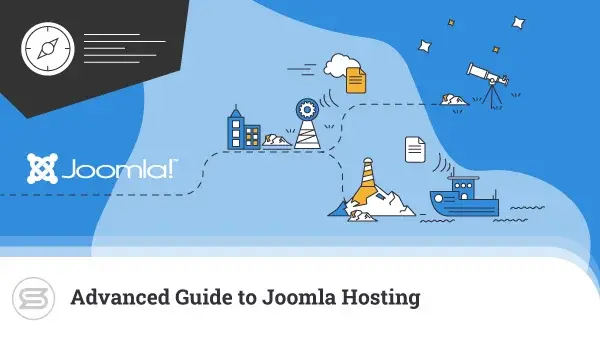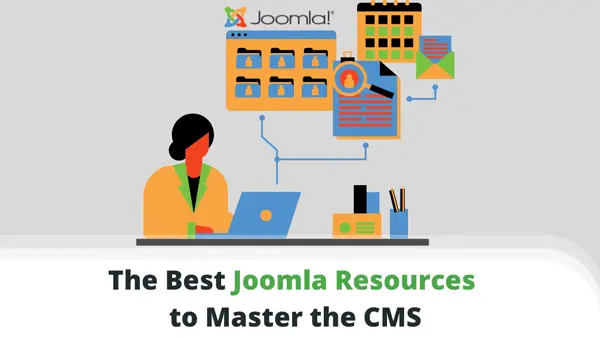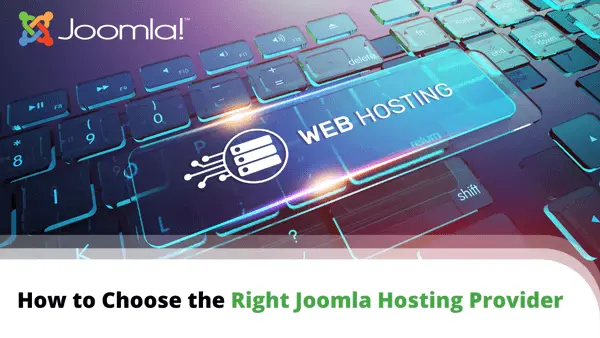You’re often told that as long as you have the right ideas, you can launch and run your own online project without additional help. You hear that you can use tools to build your website without writing code.
Sounds good, but as soon as you delve deeper, you start seeing names like Joomla, and you struggle to understand what to make of them.
The truth is, Joomla can be central to building your brand new website, so it pays to know what it is and how it works.
Let’s see if we can help.

What Is Joomla?
Joomla is the world’s second most popular open-source Content Management System (CMS). Before we go any further, we should perhaps explain what a CMS is.
Put simply, a CMS is a website-building application. Without one, you’d need to write thousands of lines of code to create a modern-looking dynamic site. A content management system like Joomla does it for you.
It connects to the database, saves the content, and sets up your web pages. There’s a backend dashboard where you upload new content, change the website’s appearance, add new functionality, etc.
The dashboard has a Graphical User Interface (GUI), so you manage your website by selecting checkboxes, pressing buttons, and flipping toggle switches.
Below, you can see what the Joomla Administrator (the name of the Joomla backend) looks like.
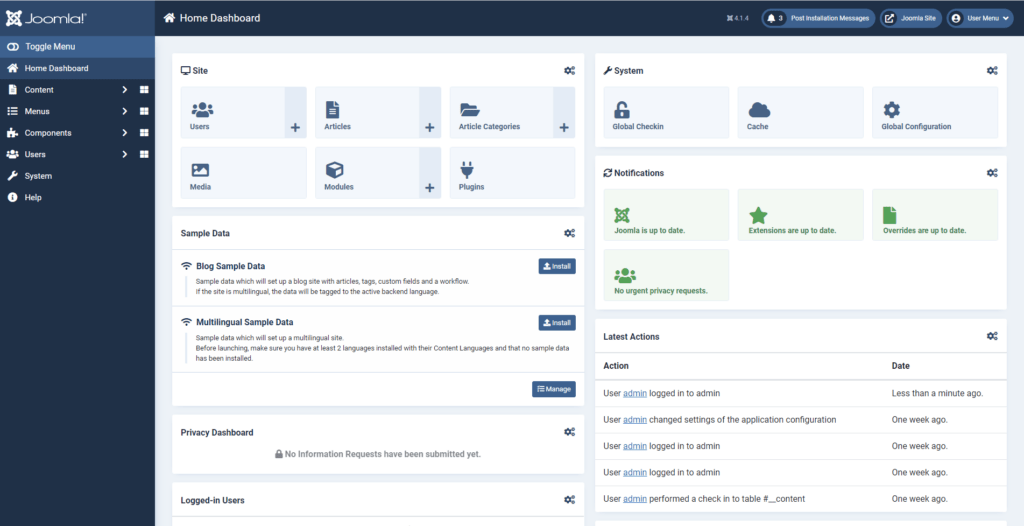
In terms of popularity, Joomla is surpassed by WordPress, but this doesn’t necessarily mean it’s inferior.
In fact, unlike WordPress, which, at its core, is a blogging platform, Joomla was built from the very beginning as a CMS. Even in its default state, it’s quite flexible and can be used for a variety of different projects. The Joomla community is pretty active, and developers are working on building new features and add-ons to make it even more versatile.
And although some argue that it’s more difficult to master than its competitors, recent changes have made the CMS much more novice-friendly than it used to be.
The History of Joomla
Although version 1.0 was launched in September 2005, Joomla can trace its roots back to 2000, when an Australian company called Miro released the Mambo content management system.
Mambo managed to gain popularity relatively quickly, partly because it was released under the GNU General Public License (GPL) and was completely free to use. However, in 2005, a copyright dispute caused the majority of Mambo’s core development team to resign.
They set up a new company called Open Source Matters and created a Mambo fork, named after the Swahili word for “all together.” That’s how Joomla was born.
The team introduced many new features over the following months, and Joomla quickly surpassed its competitors in critical aspects like usability and template control. A growing global community started forming around the CMS as a result.
The first major revision, Joomla 1.5, came out in January 2008.
It brought a new API and multi-language support, though it was criticized for its approach to access control. To avoid similar issues, the Open Source Matters board vowed to get the community more involved in the development process.
2012 saw the launch of Joomla 2.5 – another revision introducing quite a few new features aimed at less experienced users. Work on Joomla 3.x also began at the time with the idea of making the content management system more mobile-friendly and intuitive.
Joomla 3.x would become the most popular version of the CMS, but by the end of 2014, its competitors had caught up with it, and it was deemed too heavy and complicated by many people.
Calls for a new, lightweight Joomla were heard, and work on Joomla 4.x eventually began. Unfortunately, thanks to numerous delays and heated debates around the project’s management, it didn’t come out until August 2021.
At the time of writing, Joomla 4.x adoption levels are still low, mainly because its architecture is quite different. Old extensions won’t work on it, and developers have to extensively revise their products to adapt them.
Hopefully, the transition won’t take too long.
How Does Joomla Work?
Let’s break down the process of working with Joomla into several key stages.
1. Setup
You have two options for using Joomla:
- Under the Software-as-a-Service model.
You can sign up at https://launch.joomla.org/ and get an account with Joomla already installed on it. You don’t need to look for an additional hosting service, which arguably makes this the quickest way to get started. However, there are a couple of drawbacks.

You can get a free plan, but you can only use it with a Joomla.com subdomain (i.e., yoursite.joomla.com), and the hardware resources are somewhat limited. If you outgrow the free account or want to use a regular domain, you need to upgrade to one of the premium plans, which could cost a pretty penny.
Furthermore, you don’t get a choice of hosts, and switching to another provider could be troublesome.
- A hosted Joomla site.
Your second option is to set up a hosting account with a provider of your choice and then install Joomla on it. The choice of providers and configurations is pretty much unlimited, and you’d struggle to find a host that doesn’t support Joomla.
The CMS will happily run on most shared hosting accounts, though a more powerful solution will be needed once your site attracts more traffic. Usually, you can get started for no more than a few dollars per month, and many hosts throw in a free domain for the first year.
Because Joomla itself is open-source, you won’t need to pay anything to use it.


2. Modifying the site’s appearance
The appearance of Joomla sites can be altered through templates. If you don’t like the default look, you can simply go on one of the many websites offering Joomla designs and pick the one that suits your project the most.
You have free and paid options suitable for all sorts of projects, including personal blogs, large and small business websites, and online shops. A Joomla template comes in the form of a ZIP file. Joomla’s extension manager can extract the archive and set up the theme for you.
With the template installed, you’ll see options for customizing your site’s appearance and making it unique.

3. Extending the site’s functionality
As versatile as Joomla is, it’s unlikely to meet all your requirements out of the box. Fortunately, you can install a range of add-ons and expand the core’s functionality. In the case of Joomla, these add-ons are called extensions, and at the time of writing, there are close to 6 thousand of them in the official directory.
Their functionality varies wildly, and for simplicity’s sake, they are separated into three groups.
Components
In the development team’s words, if Joomla is the operating system, the components are the desktop applications. They are the items providing the site’s main features and functionality. They usually consist of two parts – the frontend and the backend, with the frontend visible to the user and the backend giving you various options and settings in the Joomla Administrator.
There are quite a few core components that come by default. For example, com_content is responsible for displaying your articles and letting you edit them as an administrator.
By installing additional components, you can implement various features and completely transform the project. For example, you can use a component to set up an online shop or add a discussion board section.
Modules
Modules usually come in the form of frontend widgets. They typically surround the central section of the Joomla page and can contain anything from the site’s footer, through a login form, to a list of links to your most recent articles.
Plugins
Joomla plugins are often described as event handlers. Events can appear either in the code or on the website’s visible sections. Depending on the desired functionality, plugins may need to change the content, restrict access for a particular set of users, or change the way the site behaves whenever they encounter a particular event.
For example, a plugin can be used to scan through users’ comments and filter out bad words.
Components, modules, and plugins often work together. For example, you can have a plugin that identifies the subheadings in your article and automatically creates a table of contents. For that, the plugin needs to connect to the com_content component and look for the title tags in the HTML. At the same time, you’ll also need a module to display the table of contents on the page. This module will work with the plugin.
4. Content management
Most of the content you upload will come in the form of articles. When it comes to the mechanisms for managing and publishing articles, Joomla’s interface is pretty much faultless. Everything is where you expect it to be, and many people would argue that it’s much more user-friendly than WordPress’s block editor.
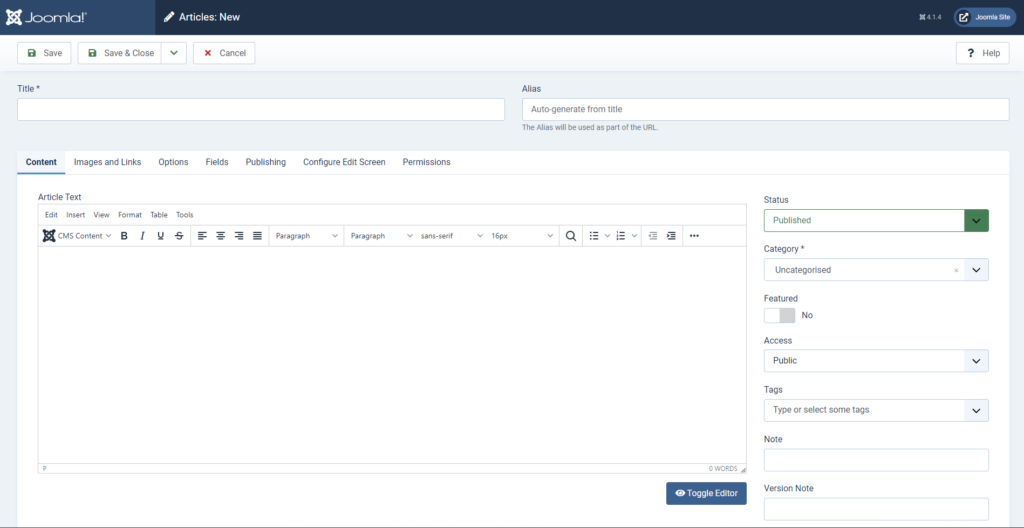
Articles are arranged in categories accessible via menu items. Getting used to Joomla’s categorization and menus may take some time, but you should eventually figure it out.
Key Joomla Features and Benefits
Over the years, Joomla has helped millions of websites get off the ground. It’s managed to do that because it has more than a few features and advantages that make it the perfect building block for online projects of all shapes and sizes. Here are some of them.
It’s free.
Joomla is fully open-source, and you can download and use it as much as you want without paying a penny.
It will run on most standard hosting plans
You’ll struggle to find a provider that doesn’t support Joomla. It runs best on the so-called LAMP stack (short for Linux, Apache, MySQL, PHP), a standard web hosting configuration, but it can also work in other, less common environments.
It’s flexible
As soon as you get used to it, you’ll see just how versatile Joomla can be. Many customization options are available by default, and the vast pool of extensions and templates helps you easily turn your ideas into reality.
It’s suitable for big and small websites
Joomla is just as effective for powering your personal blog as it is for developing a large business website. As a result, you can base your ambitious project on Joomla without worrying that you will have to move it to a different platform one day.
Multilingual support
You can build a truly international website with Joomla. The core is translated into over 70 languages, and the CMS supports multilingual sites without the need to install any extensions or add-ons.
Default security and SEO features
Building a website is about more than just uploading and publishing content, and Joomla’s developers know it. That’s why they’ve enabled search engine-friendly aliases that can easily be embedded into your site’s URLs. They’ve also implemented a two-factor authentication system to help you mitigate the risk of brute-force attacks.
A helpful global community
Over the years, Joomla has amassed a large following of site owners who know it inside out. If you ever get stuck, a forum full of people willing to help out is never more than a couple of clicks away. What’s more, teams of developers from all over the world continue to work on new extensions and features, so you can be sure that in the future, you will be able to do even more exciting things with your website.
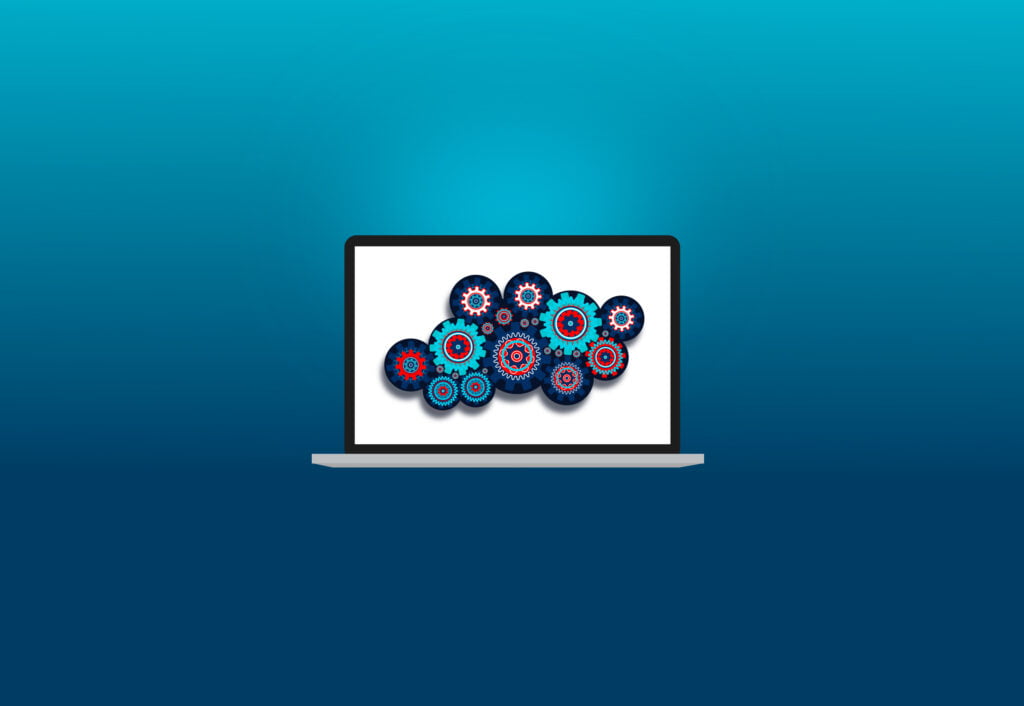
How Can I Download Joomla?
The project’s official website is https://www.joomla.org/. From there, you can easily download language packs, extensions, and, of course, any version of the Joomla core you want, including the ones that are no longer supported.
However, chances are, you don’t need to download the Joomla core at all. Most hosting accounts come with a web hosting control panel and an automatic installer like Softaculous. It can download the core files, set up the database, and install the CMS in seconds. All you need to do is click a couple of buttons.
Conclusion
Because it’s the second most popular CMS solution in the world, some people think that Joomla is also the second-best. This really isn’t the case.
It may be a bit tougher to get used to than some of its competitors, but like any other platform of this kind, Joomla has its own advantages. Sometimes, because of them, it’s the best solution for your project.
FAQ
Q: Is Joomla easy to learn?
A: Even if you have experience with other CMS applications, you will need time to get used to Joomla. That said, the Administrator’s layout is neat and logical, and the resources you need are easily accessible, so you should soon be able to breeze past everyday tasks.
Q: What can you build with Joomla?
A: Joomla gives you plenty of tools for managing different types of content, so it’s pretty flexible out of the box. Add the available extensions and templates, and you’ll see that it can be used for pretty much any kind of project you can think of, including:
- Personal blogs and websites
- Online magazines and news websites
- Community-based portals
- Government websites
- Business and corporate websites of all shapes and sizes
- Online shops and reservation platforms
Q: Is Joomla good for SEO?
A: By default, Joomla has a few basic tools for making URLs more search engine-friendly. However, as with other CMS solutions, the characteristics of the content are just as crucial for the site’s SEO performance. Installing a few specialized extensions can also improve the project’s search engine rankings.
An Exclusive Insiders Look Behind The SEO and Web Development Curtain
